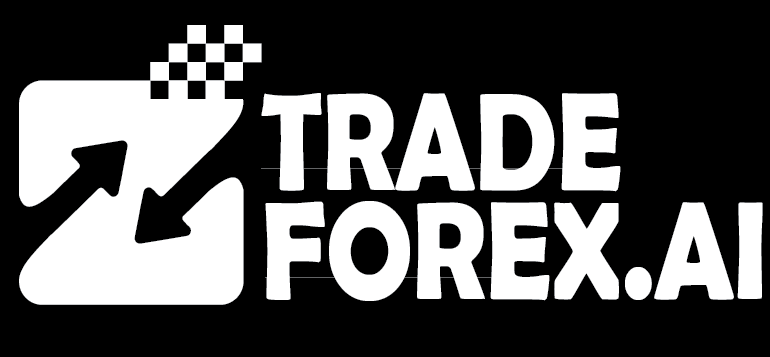Trading in 2025 is far more advanced than it was even a few years ago. Markets have become smarter, faster, and more data-driven, forcing traders to evolve beyond traditional tools and instincts. Today’s traders face an ocean of information – price movements, order books, sentiment data, and algorithmic trends – all happening in real time. To stay competitive, they need technology that doesn’t just collect data but understands it. That’s where the ChatGPT AI model is transforming how people trade.
The ChatGPT AI model goes beyond basic automation. It’s a conversational AI that helps traders analyse markets, explain complex ideas, and build structured trading models. It can process massive amounts of information, identify repeating market behaviours, and help create data-backed trading strategies. Instead of relying on trial and error, traders can use the model to simulate outcomes, refine strategies, and make better decisions grounded in evidence rather than emotion.
One of the most effective ways to apply this technology is in volume-based trading. Volume is often considered the heartbeat of the market; it shows where traders are active, where institutional interest builds, and where price moves have real strength behind them. A surge in volume usually signals a breakout or a change in momentum, while declining volume may warn of exhaustion or reversal. When combined with AI-driven analysis, volume data becomes a powerful confirmation tool for identifying genuine market opportunities.
By using the ChatGPT AI Model alongside volume-based trading, traders can move from reactive decisions to proactive strategies. The AI can help recognise volume spikes, confirm trend strength, and even filter out false breakouts that trap inexperienced traders. It allows both beginners and professionals to see markets with greater clarity and confidence. This article explores how to practically integrate the ChatGPT AI model into volume-based trading, build smarter AI trading strategies, and apply machine learning in trading for consistent, informed results in 2025 and beyond.
Understanding Volume-Based Trading
Volume-based trading focuses on analysing how trading volume correlates with price action. Instead of relying solely on price patterns, it measures the strength behind every market move. High trading volume often indicates strong conviction from market participants, while low volume can signal uncertainty or indecision.
By examining volume trends, traders can confirm breakouts, identify reversals, and detect accumulation or distribution phases. The integration of AI into volume-based trading enables automated systems to process historical and real-time volume data at scale, identifying subtle patterns invisible to manual analysis.
For example, the ChatGPT AI model can analyse price-volume relationships across multiple timeframes and suggest when a volume spike supports a bullish continuation. Traders can then test this signal using backtesting frameworks to verify accuracy before deploying it live.
The AI’s ability to adapt quickly to changing volume dynamics makes it particularly effective during periods of market volatility. This fusion of human logic and machine precision creates a hybrid trading approach that blends intuition with data-backed confidence.
Role of ChatGPT AI Model in Trading
The ChatGPT AI Model is more than a conversational AI—it functions as a dynamic assistant that helps traders design, optimise, and evaluate trading systems. Using its natural language processing capabilities, it can generate code, recommend indicators, and explain algorithmic logic in simple terms.
Traders can ask the model to develop a volume-based trading script that includes filters for volume spikes, divergence, or liquidity clusters. The ChatGPT AI model can provide Python or Pine Script examples that integrate easily with platforms like MetaTrader or TradingView.
In practice, traders use it to:
- Automate data collection from APIs or exchanges.
- Generate AI trading strategies using historical volume and price data.
- Interpret results and suggest optimisations to improve risk-to-reward ratios.
- Test automated trading models on different timeframes for robustness.
The flexibility of this model allows traders to customise their approach. For instance, it can generate separate strategies for forex, crypto, and equities while maintaining consistent logic. Its adaptive responses make it a valuable co-pilot for any trader exploring machine learning in trading.
Building Volume-Based AI Trading Strategies
Creating a reliable AI-driven volume-based trading strategy starts with a structured process. The ChatGPT AI Model helps traders define hypotheses, engineer features, and build predictive models that can analyse thousands of data points quickly.
A practical workflow often includes:
- Data Collection: The AI guides users to retrieve historical OHLCV (open, high, low, close, volume) data.
- Feature Engineering: It calculates indicators like On-Balance Volume, VWAP, and Accumulation/Distribution.
- Model Development: Using libraries such as XGBoost or TensorFlow, it creates predictive models.
- Validation: It tests the model on unseen data to confirm accuracy and avoid overfitting.
- Deployment: The final system can operate as an automated trading model, executing trades automatically.
For example, a trader might design an AI trading strategy where a surge in volume confirms a breakout signal. The ChatGPT AI model can simulate different volume thresholds to identify the most profitable configuration. Over time, it learns from past trades, improving predictive reliability.
By combining volume data with momentum indicators, traders can build hybrid models that account for both the strength and sustainability of price movements. This approach makes AI trading strategies more adaptive and less prone to false signals.
Integrating Machine Learning in Trading
Machine learning in trading adds depth to data interpretation and prediction accuracy. Algorithms can detect nonlinear relationships that traditional indicators might miss. When paired with the ChatGPT AI model, this process becomes more accessible even for non-programmers.
ChatGPT helps design and fine-tune models like random forests, gradient boosting, or LSTMs. It can also explain which model works best for specific trading environments. For example, LSTM models are effective for time-series forecasting, while gradient boosting can classify bullish versus bearish signals.
This integration enhances volume-based trading by allowing the system to learn from experience. Instead of relying on static thresholds, the AI dynamically adjusts its logic. Traders can use machine learning in trading to analyse intraday volume surges, identify accumulation zones, or filter out low-quality signals.
Moreover, it improves position sizing and risk management. By evaluating previous trades, the system estimates potential drawdowns and adapts trade sizes accordingly. The outcome is an intelligent automated trading model that self-corrects and evolves over time.
Real-World Applications of AI Trading Strategies
In real markets, AI trading strategies built with ChatGPT are being applied across forex, stocks, and cryptocurrency sectors. These models can analyse order flow, predict liquidity shifts, and generate alerts for probable market reversals.
For instance, a crypto trader might use the ChatGPT AI model to detect when trading volume on Bitcoin exceeds its 30-day average. This could trigger a signal to watch for a possible bullish continuation. Similarly, in forex, the model could track sudden increases in EUR/USD volume after economic announcements to identify entry opportunities.
In equities, traders apply AI trading strategies to filter high-volume breakout stocks. The model suggests ideal entry points, stop-loss levels, and take-profit zones based on statistical probability rather than guesswork.
Each use case demonstrates how AI-powered volume-based trading improves decision-making and reduces emotional biases. Automated trading models execute trades with precision, ensuring consistent application of rules even when market conditions change rapidly.
Advantages of Using the ChatGPT AI Model
The advantages of integrating the ChatGPT AI model into trading go beyond convenience. It offers flexibility, scalability, and speed unmatched by manual methods.
Key benefits include:
- Efficiency: The model processes vast datasets faster than human analysis.
- Customisation: Traders can adapt it for different instruments or timeframes.
- Education: It explains complex technical concepts in understandable language.
- Automation: It helps create fully automated trading models for hands-free execution.
- Continuous Improvement: The model refines strategies based on feedback loops and new data.
Unlike prebuilt bots, the ChatGPT AI model provides creative flexibility. Traders can test unconventional volume-based trading ideas and refine them through continuous experimentation.
This adaptability ensures strategies remain effective across different market regimes, including periods of low liquidity or sudden volatility. As machine learning in trading advances, ChatGPT’s integration will likely expand into portfolio optimisation and predictive analytics.
Challenges and Best Practices
Despite its strengths, AI-driven trading is not without challenges. Models can overfit, data may contain noise, and market conditions can shift unexpectedly. Therefore, traders must apply best practices when using the ChatGPT AI Model for volume-based trading.
Recommended practices include:
- Regularly backtesting strategies on updated data.
- Using diverse datasets to avoid biased results.
- We keep a close watch on real-time performance metrics like win rate and drawdown.
- Incorporating human oversight for unexpected events or outliers.
Another key practice is combining AI outputs with traditional analysis. While automated trading models handle repetitive tasks, human traders should interpret macroeconomic context and sentiment shifts. This balance creates synergy between automation and human experience.
The Future of AI Trading Strategies in 2025
As 2025 progresses, trading technology will continue merging AI, data analytics, and automation. The ChatGPT AI model represents a major step toward democratising machine learning in trading. What once required coding expertise is now accessible through conversational interaction.
Volume-based trading will evolve further as AI models integrate sentiment analysis, blockchain data, and global macroeconomic feeds. Traders will gain a holistic view of the market instead of relying on isolated indicators.
We can expect automated trading models to become more self-aware—capable of adjusting parameters based on live volatility, liquidity, and order book depth. These intelligent systems will not replace human traders but enhance their decision-making with precision and consistency.
The combination of the ChatGPT AI Model, robust data science techniques, and volume-based trading principles defines the future of profitable and informed trading strategies. It empowers traders to think strategically, act efficiently, and adapt faster than ever before.
Conclusion
Using the ChatGPT AI Model for volume-based trading in 2025 provides traders with an unmatched edge in identifying trends, managing risks, and creating sustainable profitability. Its integration with machine learning in trading and automated trading models makes it a cornerstone of modern trading innovation.
Traders who embrace AI trading strategies gain the ability to interpret markets in real time, reduce errors, and develop scalable systems. As technology continues advancing, the synergy between human creativity and AI precision will redefine how markets are analysed and traded.
The future belongs to traders who learn how to harness these intelligent systems effectively. By combining sound market knowledge with tools like the ChatGPT AI model, trading becomes not just data-driven but insight-driven — leading to smarter, faster, and more confident decisions in every market condition.
Frequently Asked Questions (FAQ)
1. What is the ChatGPT AI model in trading?
The ChatGPT AI Model is an intelligent assistant that helps traders analyse market behaviour, detect trends, and design strategies using natural language. It bridges the gap between human intuition and machine precision, making complex analysis simple and fast.
2. How does it improve volume-based trading?
It studies price and volume together to uncover the real story behind market moves. The model can highlight when rising volume confirms a strong breakout or when declining volume signals weakening momentum, helping traders act before most participants notice the shift.
3. Can new traders use the ChatGPT AI model effectively?
Absolutely. Even without coding skills, beginners can ask the model to explain technical setups, generate indicators, or simulate strategies. It helps them understand market logic and avoid common beginner mistakes like chasing price without confirmation from volume.
4. Can ChatGPT create automated trading models?
Yes. It can generate Python, Pine Script, or MetaTrader code to automate entries, exits, and alerts. Traders still need to test and adjust results before live execution, but it dramatically speeds up the strategy-building process.
5. How reliable is AI for trading in 2025?
AI is highly useful for data analysis and backtesting but not infallible. Markets evolve quickly, and no algorithm predicts every move. The best approach is combining AI insights with experience, risk management, and regular model updates to maintain accuracy.
6. Does ChatGPT replace human traders?
No. It enhances their performance. AI manages data, but humans still provide judgement, adaptability, and emotional balance. The best results come from cooperation between AI-driven logic and human awareness.
Read here to learn more about “Online Trading on a Low Budget: 5 Smart Ways That Work in 2025“

I’m Chaitali Sethi — a seasoned financial writer and strategist specializing in Forex trading, market behavior, and trader psychology. With a deep understanding of global markets and economic trends, I simplify complex financial concepts into clear, actionable insights that empower traders at every level. Whether it’s dissecting winning strategies, breaking down market sentiment, or helping traders build the right mindset, my content bridges the gap between information and implementation.




